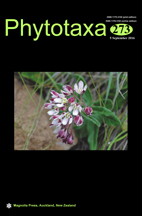Abstract
A new monotypic genus, Brasilianthus carajensis, is described from Carajás Mineral Province where it is restricted to campo rupestre vegetation on ironstone outcrops (canga) that form island-like lenses nestled in the Amazon rainforest of southeastern Pará, Brazil. Among neotropical capsular-fruited Melastomataceae, Brasilianthus is distinguished by a unique combination of characters: annual habit; haplostemonous, 4-merous flowers; tubulose-subcylindric hypanthia with erect, narrowly obovate deciduous calyx lobes that are widest distally and well-spaced basally; short cupulate-campanulate anthers with a wide truncate apical pore; biaristate ventral staminal appendages; 4-locular ovary with an apex crowned by four persistent ± deltoid appendages; absence of placental intrusions in mature capsules; and subcochleate seeds with a costate testa. These morphological characters are congruent with DNA sequence data that show Brasilianthus nested within the Marcetia alliance of the tribe Melastomeae where it is sister to Nepsera aquatica. These two genera are in turn sister to Ernestia pullei and Appendicularia thymifolia. A comprehensive description of Brasilianthus is presented together with diagnostic illustrations, images of plants in the wild, a distribution map, SEM images of seeds, a geospatial conservation assessment based on IUCN criteria, and comparisons with generic relatives in the Marcetia alliance.

